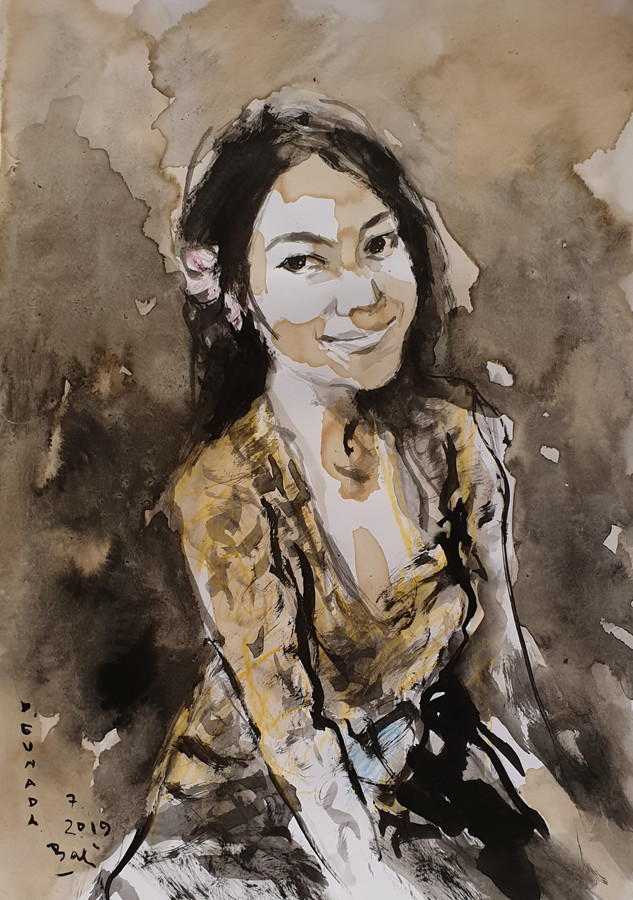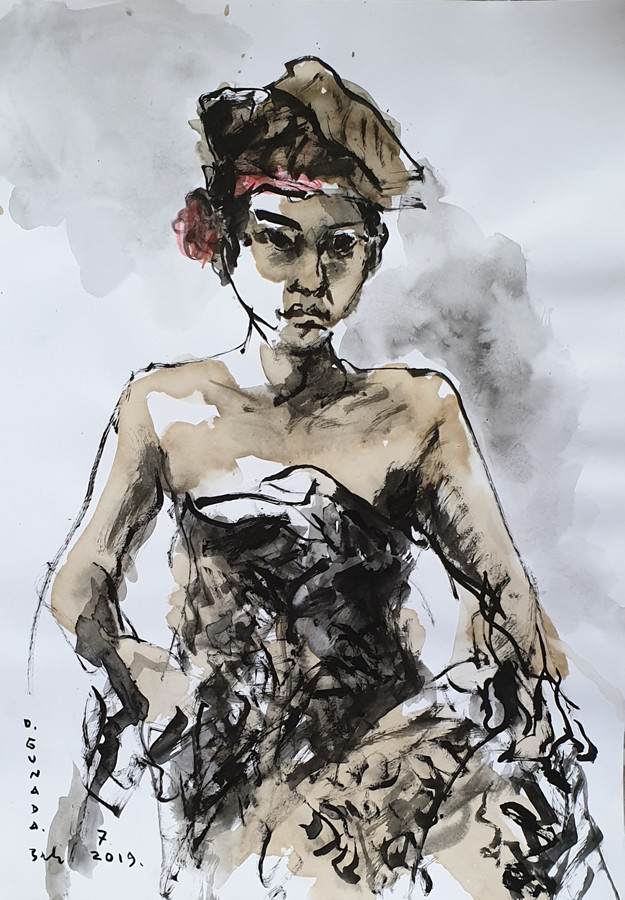Balinese contemporary artist Gede Gunada first came to my attention in 2012. He was among a group of four other local artists who participated in the Artists Camp in the Top End of Northern Territory (NT) of Australia in the same year. The project’s mission was to expose the Balinese artists to the raw and diverse landscape along with the art and culture of the aboriginal people.
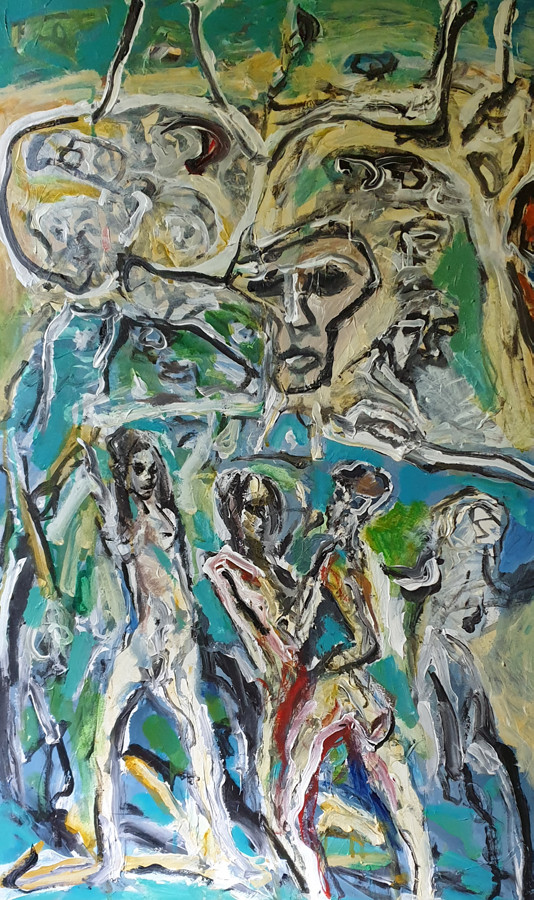
Gunada’s depictions of the NT terrain, characterised by his rapid brush stroke in an expressionistic style, revealed the distinct earthy qualities of the lands. His five-week experience was varied and at times confronting, being exposed to the extremes of the desert environment. “I was not only fascinated by the changing landscapes, I was mesmerised by the ancient Australian aboriginal rock paintings,” Gunada said. “I would silently sit for hours, attempting to absorb the mysterious, invisible essence of the works.”
Recently, however, through the convenience of social media – Instagram – his works once again caught my eye, especially his figurative compositions. Defined by simple colour schemes on white paper – Chinese ink with coffee washes, and at times a touch of pastel to add a vibrant sense of colour contrast. Strong black lines describe the structure of his subjects, and then random dabs of light brown coffee wash and ink complete the work. Unhindered by the need to create details in the composition, fascinating abstract elements prevail, that include the white background, become defining features of Gunada’s works.
“The experience leading me to use coffee as a painting medium occurred purely by mistake,” Gunada said with a smile upon his face. “I spilt some coffee upon a work, then marvelled at the strength of the colour and the aesthetic impact it made. I then decided I had to experiment some more.” One of the highlights of these works is their sense of immediacy. Works on medium-sized pieces of paper he completes within 10 – 15 minutes.
His portraits, often of beautiful young women, school children, or friends, are produced quickly, reflecting an artist who is grounded in self-confidence. They capture the strong individual characteristics of his subjects, both the physical and the invisible essence that shines from within.
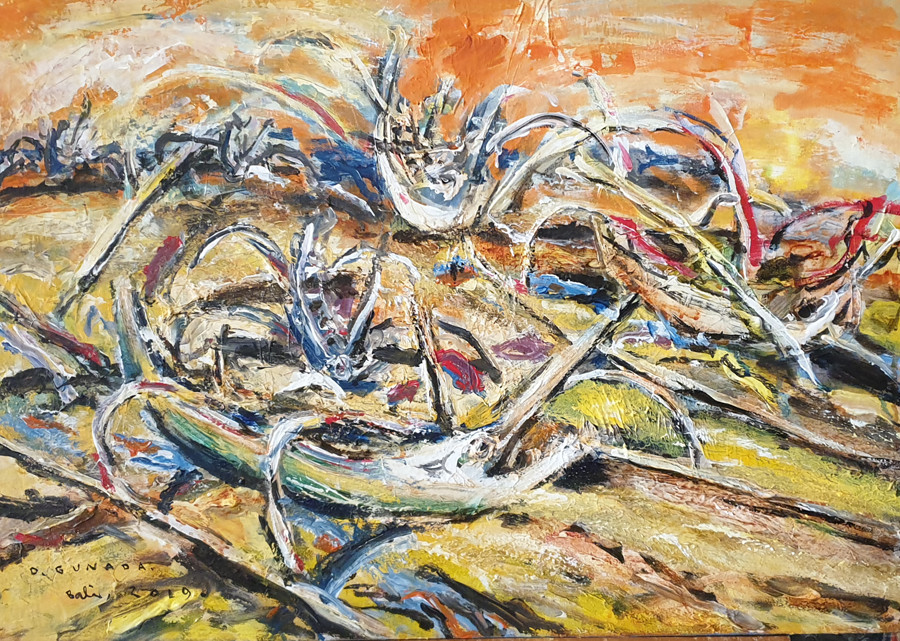
Living in the village of Ababi, near the Tirta Gangga water palace, half an hour from the city of Amlapura, the capital of the Karangasem regency of East Bali, Gunada’s family compound is surrounded by bamboo forests in the foothills. Being removed from the art communities of Denpasar and Ubud, these days Gunada rarely exhibits at the popular art venues, and except for exposure through Instagram, he remains somewhat obscure.
Born in 1979 Gunada received his art education at SMSR junior high school in Denpasar from 1993 – 1997. After which he was mostly self-taught while also learning from two of Bali’s most well-known and respected senior contemporary artists – Made Budhiana and Nyoman Sukari (1968 – 2010). “Sukari didn’t like to talk much; only he would encourage me to be dedicated and work hard. Budhiana emphasized that I must also work hard to discover my own personal artistic ‘voice’,” Gunada said.
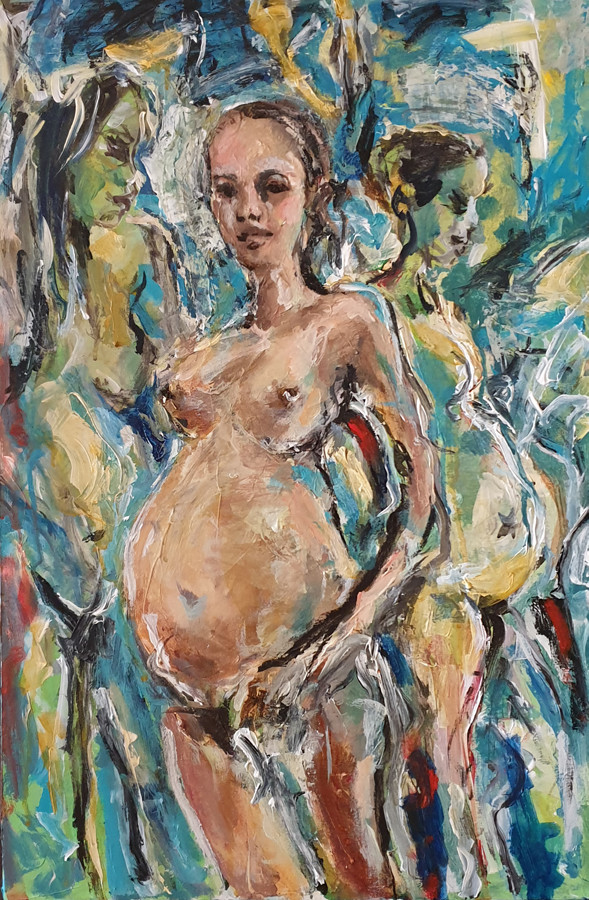
From a young age, Gunada was inspired to create drawings, random shapes and forms scribing images into the dirt with a stick in the yard of his family house. “While at junior school I developed a love for painting the figures of the wayang kulit shadow puppet theatre,” the artist said. “This then developed into a passion for the wayang theatre. A puppet master or dalang lived nearby, so I often spent hours watching him make the puppets, practice, even helping during performances. I would sit next to him and hand him the puppets on cue.”
The stunning mountainous and oceanside landscapes of his region are often the subject matter for his works, along with the iconic architectural features from an old Balinese kingdom. This kingdom was once a mighty empire reaching west into Buleleng, and as far east as the island of Lombok. The King Anak Agung Anglurah Ketut Karangasem (1887-1966), who was a master of Balinese dance and an excellent woodcarver, built in the area two large water palaces; Ujung Water Palace by the ocean, constructed in 1926 and Tirta Gangga created in 1957. Dynamic brush strokes and abstract elements again characterise Gunada’s depictions of the landscape and the architectural sites. In some of his works, he strips the physical aspects of the scenario down to their essential core, then brings the composition to life using his bold and electrifying palette.
“I like to balance my creativity by working in the field with friends, and also at home alone in my studio,” Gunada says. “I love to paint quickly; it reflects my passionate, emotional state of well being.”
To see more of Gede Gunada’s work go to: Instagram @ggunada

